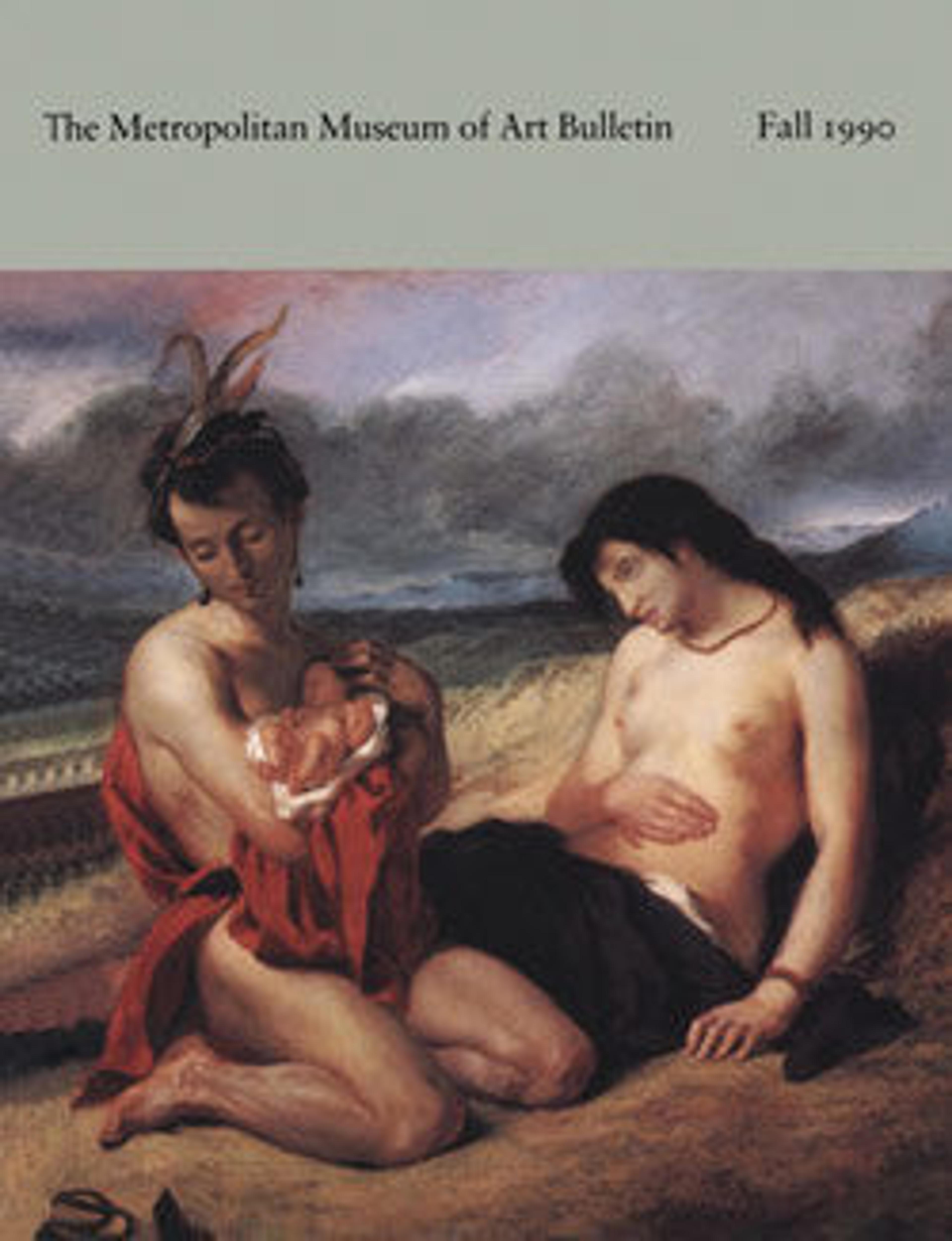Crucifix
Brass crucifixes cast by Kongo artists reflect the influence Christianity has had on Kongo culture. In 1490, less than a decade after the first Portuguese explorers encountered the then vast and thriving Kongo kingdom, missionaries were sent there to establish a Christian settlement. Although the king and his successor converted almost immediately, Christianity never replaced traditional religious beliefs. Instead, Christian ritual objects acquired many of the same meanings and functions of the charms and power objects they were meant to supersede. Kongo chiefs received them along with other insignia of office and used them to proclaim their power as lawgivers and judges.
Although based on European models, the crucifixes made by Kongo artists also acquired Kongo forms. They were usually cast in an open mold using metal obtained from manillas, brass rings imported from Europe. Praying figures, sometimes reduced to disembodied heads as on the arms of this cross, were often added to the composition. A few incised lines depict Christ's ribs and his knotted loincloth, which are more recognizable here than in later examples. Chirst's exaggerated, splayed hands and feet--joined in a single, five-toed limb--enhance the power of this image.
Although based on European models, the crucifixes made by Kongo artists also acquired Kongo forms. They were usually cast in an open mold using metal obtained from manillas, brass rings imported from Europe. Praying figures, sometimes reduced to disembodied heads as on the arms of this cross, were often added to the composition. A few incised lines depict Christ's ribs and his knotted loincloth, which are more recognizable here than in later examples. Chirst's exaggerated, splayed hands and feet--joined in a single, five-toed limb--enhance the power of this image.
Artwork Details
- Title:Crucifix
- Date:17th century
- Geography:Angola, Northwestern Angola
- Culture:Kongo peoples
- Medium:Brass
- Dimensions:H. 11 7/8 x W. 6 1/8 in. (30.2 x 15.5cm)
- Classification:Metal-Sculpture
- Credit Line:Gift of Ernst Anspach, 1989
- Object Number:1989.346
- Curatorial Department: The Michael C. Rockefeller Wing
More Artwork
Research Resources
The Met provides unparalleled resources for research and welcomes an international community of students and scholars. The Met's Open Access API is where creators and researchers can connect to the The Met collection. Open Access data and public domain images are available for unrestricted commercial and noncommercial use without permission or fee.
To request images under copyright and other restrictions, please use this Image Request form.
Feedback
We continue to research and examine historical and cultural context for objects in The Met collection. If you have comments or questions about this object record, please contact us using the form below. The Museum looks forward to receiving your comments.
